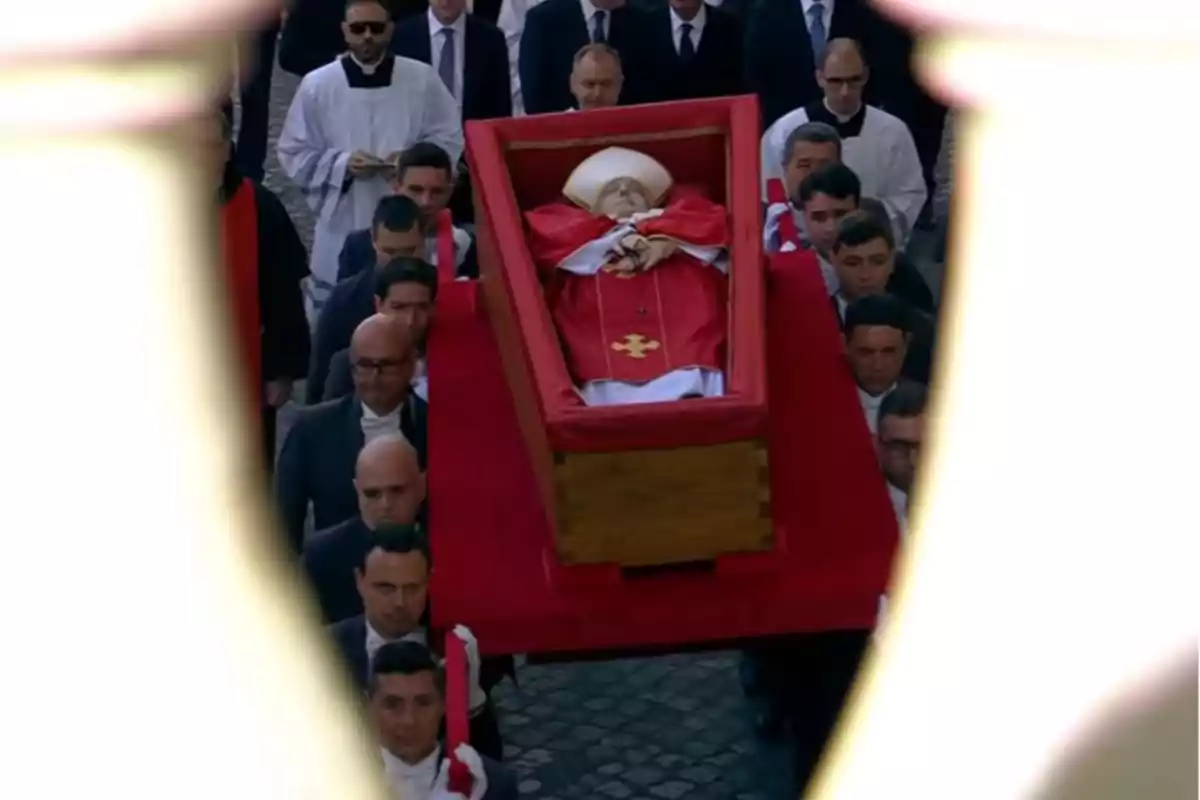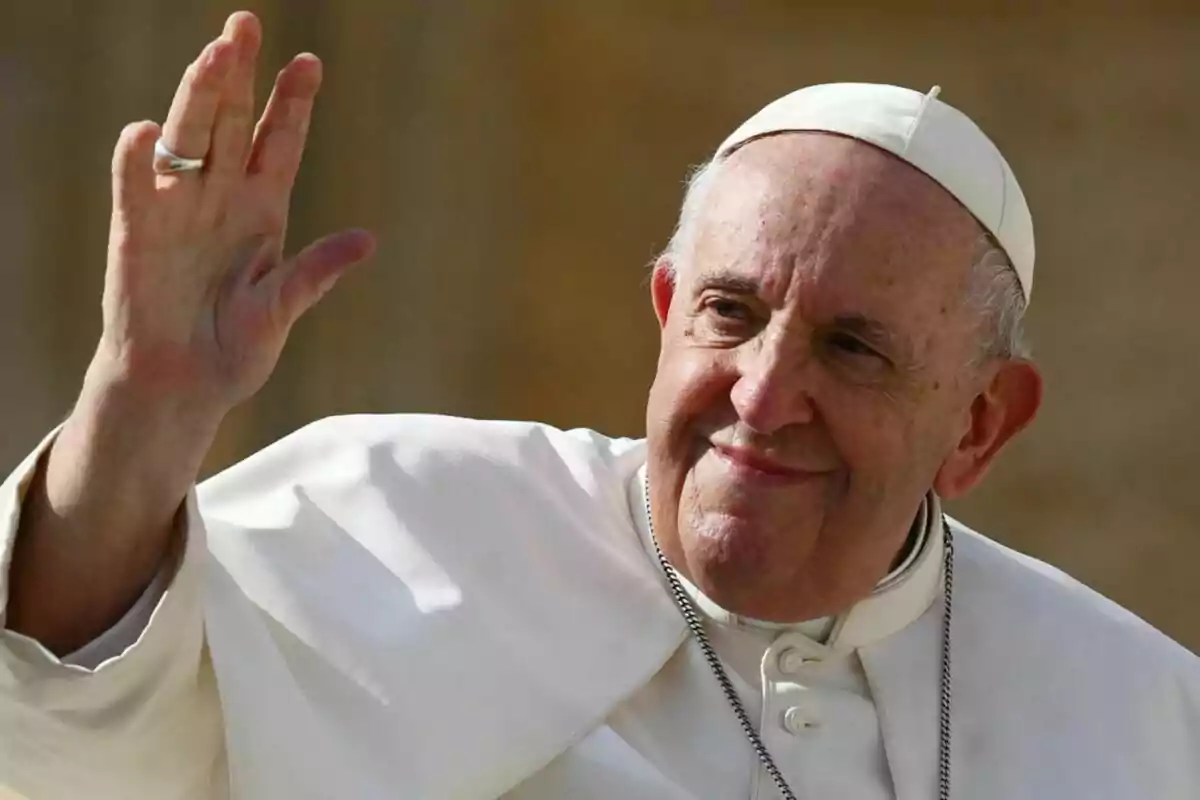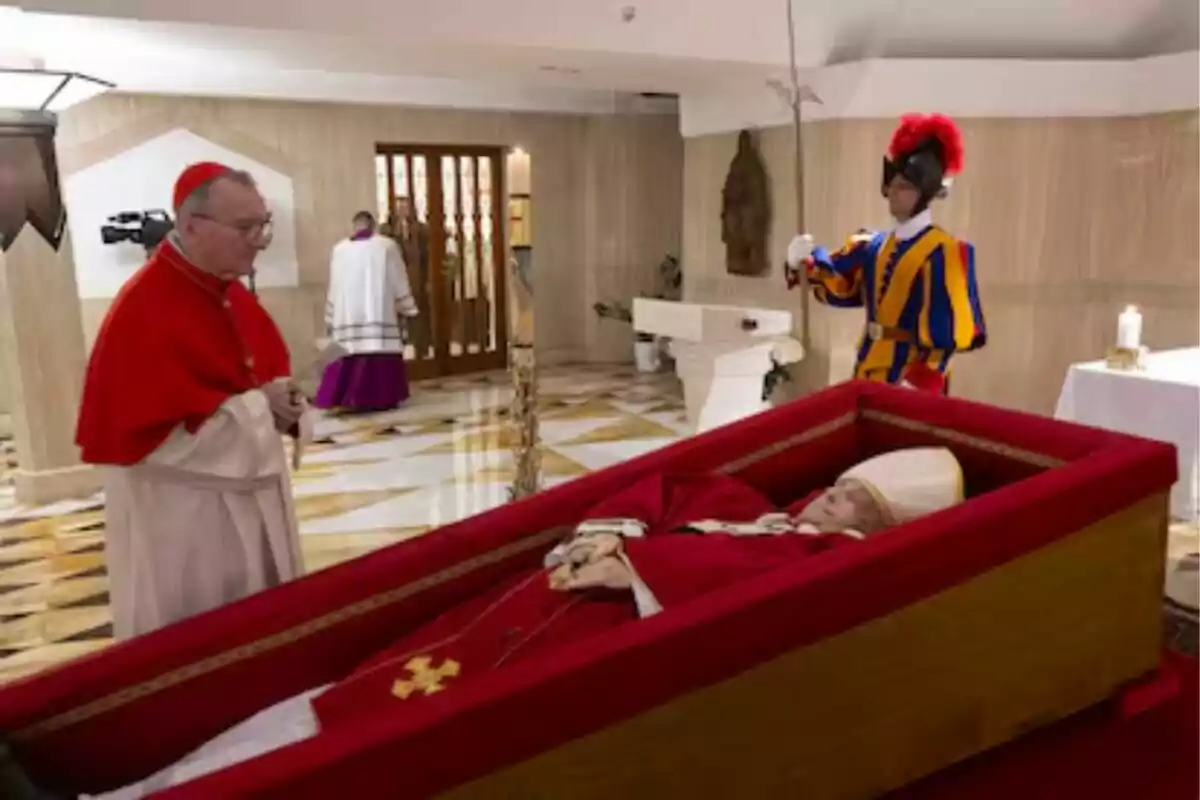
Confirmed: This Is the Surprising Request Pope Francis Made Before Dying
The Pontiff's coffin is already on display in St. Peter's Basilica, where the faithful can bid him their final farewell
Pope Francis has made it more than clear that he has been a man of principles. Departing from the usual has been his maxim, and even after death, he will continue this way. Little by little, details of the decisions the Pontiff himself made before passing away are coming to light.
In a gesture of humility and consistency with his austere lifestyle, Pope Francis has expressly requested not to be embalmed after his death. This way, he joins a recent tradition among modern pontiffs. Instead, his body has been subjected to a thanatopraxy treatment, a technique that allows the remains to be kept in acceptable conditions.
The pontiff's body will be on display until Friday night at St. Peter's Basilica, where a massive influx of believers who wish to pay tribute is expected. Thanatopraxy, less invasive and more discreet than embalming, responds to the desire to keep sobriety even after death. Francis is not the first to make this decision.

Not the Only One Who Has Decided Not to Be Embalmed
His predecessors, Benedict XVI, John Paul II, John Paul I, and Paul VI, also chose not to be embalmed. All of this is in line with a more natural view of the death process. This trend marks a departure from past practices when preserving the pope's body was considered almost a ceremonial obligation.
A notable exception was Pope John XXIII, whose body was embalmed so successfully that, when exhumed in 2001, it was found to be in a surprisingly intact state. His body is currently on display at St. Peter's Basilica. However, not all preservation attempts have been so successful.

The case of Pope Pius XII is remembered for the disastrous result of an experimental preservation method. Although he had also requested not to be embalmed, an alternative technique was used that failed miserably. The body began to swell from the gases of the decomposition process, generating an unbearable odor.
A Complicated Situation in Previous Cases
In response to this situation, the coffin was hastily closed. With the increase in heat, the internal pressure caused the pontiff's chest to explode, accelerating the visible decomposition of his face and body. Francis's decision not only aligns with his image of simplicity but also seems to respond to the desire to demystify the papal figure.
All of this is a reminder that even Christ's envoy on Earth is, in the end, just a man. With this final gesture, Pope Francis reaffirms his message of humility until the last moment. Once again, a man of principles.
More posts: